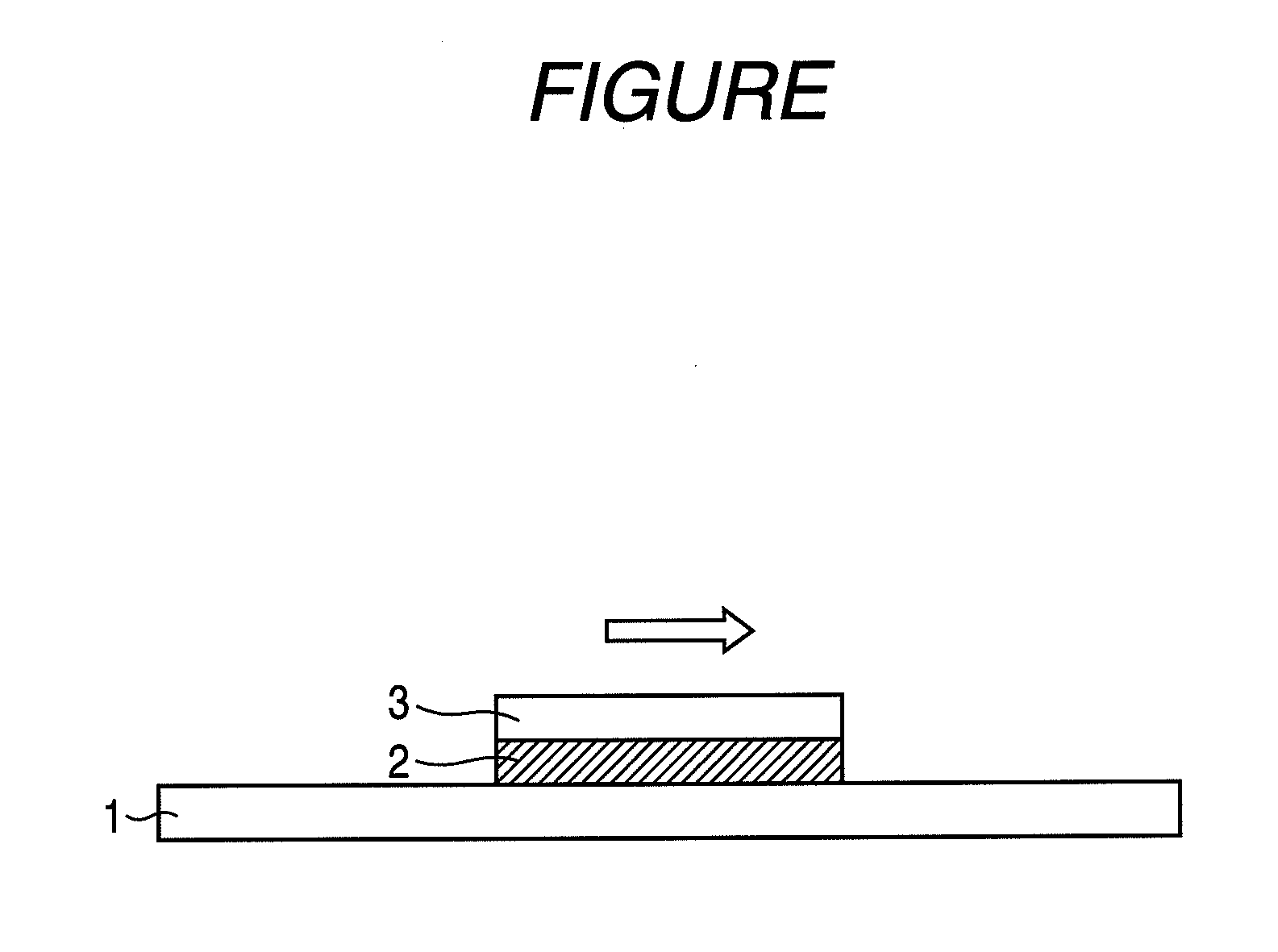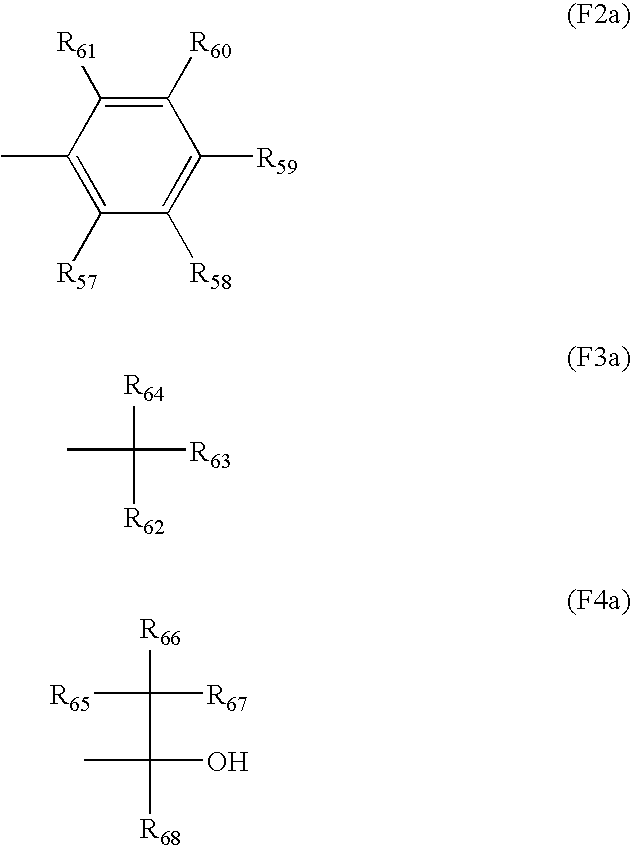Resin for hydrophobitizing resist surface, method for manufacturing the resin, and positive resist composition containing the resin
a hydrophobic resist and resin technology, applied in the direction of photomechanical equipment, instruments, photosensitive materials, etc., can solve the problems of adversely affecting performance and contamination of the lens surface, and achieve the effect of suppressing development defects and preventing elution
- Summary
- Abstract
- Description
- Claims
- Application Information
AI Technical Summary
Benefits of technology
Problems solved by technology
Method used
Image
Examples
synthesis example 1
Synthesis of Resin (HR-1)
[0466]A monomer solution is prepared by dissolving 28 g of t-butyl methacrylate (purity: 98%), and 53 g of 2,2,3,3,4,4,4-heptafluorobutyl methacrylate in 130 ml of cyclohexanone. A polymerization initiator V-601 (manufactured by Wako Pure Chemical Industries Ltd.) (4 g) is added to the above solution, and the mixture is dropped to 10 ml of cyclohexanone heated at 100° C. over 4 hours in a nitrogen atmosphere. After termination of dropping, the reaction solution is stirred for 2 hours while maintaining the polymerization temperature at 100° C., and then cooled to room temperature and the polymeric solution is taken out. The obtained polymeric solution is dropped into 1 liter of water-containing methanol to precipitate the polymer, and the polymer is filtered. The obtained undried resin is taken out, dried at 20 mmHg (2.66 kPa) and 40° C. for 40 hours to obtain the objective resin (HR-1). The resin is dissolved in propylene glycol methyl ether monoacetate (her...
synthesis example 2
Synthesis of Resin (HR-45)
[0468]A monomer solution is prepared by dissolving 9 g of hexafluoroisopropyl methacrylate (purity: 98%), and 36 g of tricyclo[5.2.1.02.6]decan-8-yl methacrylate (another name: tricyclodecanyl methacrylate) (purity>99%) in 200 ml of PGMEA, and 2 g of a polymerization initiator V-601 is added to the reaction solution. The pressure of the reaction vessel is reduced to 30 mmHg, and then the operation to return reduced pressure to atmospheric pressure by dry nitrogen is repeated 3 times, and the flask is maintained at 10 to 20° C. with ice water. PGMEA (20 ml) is put in another polymerization tank, and the inside of the tank is replaced with dry nitrogen. The reaction solution in which the monomers and the polymerization initiator are dissolved is stirred and dropped to the PGMEA heated at 80° C. in a nitrogen atmosphere over 2 hours. After termination of dropping, the reaction solution is stirred for 2 hours while maintaining the polymerization temperature at ...
synthesis example 3
Synthesis of Resin (HR-30)
[0471]Allyltrimethylsilane (11 g) (purity>99%), and 20 g of t-butyl-2-(trifluoromethyl) acrylate (purity: 98%) are dissolved in 60 ml of tetrahydrofuran (hereinafter abbreviated to “THF”). While the mixture is stirring in a nitrogen atmosphere at 65° C., 0.1 g of a polymerization initiator V-65 (manufactured by Wako Pure Chemical Industries Ltd.) is added to the reaction solution and stirred for 5 hours. The obtained polymeric solution is cooled to room temperature, diluted with 10 ml of THR, and dropped to 500 ml of water-containing methanol to precipitate the resin, and the resin is filtered. The obtained undried resin is taken out, dried at 20 mmHg (2.66 kPa), 40° C. for 40 hours to obtain the objective resin (HR-30).
[0472]After the obtained resin is washed with 500 ml of methanol and filtered, dissolved in THF, and the solution is passed through “Ion Clean” (trade name, manufactured by Pall Corporation, material: chemical modification type super-high mo...
PUM
| Property | Measurement | Unit |
|---|---|---|
| Fraction | aaaaa | aaaaa |
| Percent by mass | aaaaa | aaaaa |
Abstract
Description
Claims
Application Information
 Login to View More
Login to View More - R&D
- Intellectual Property
- Life Sciences
- Materials
- Tech Scout
- Unparalleled Data Quality
- Higher Quality Content
- 60% Fewer Hallucinations
Browse by: Latest US Patents, China's latest patents, Technical Efficacy Thesaurus, Application Domain, Technology Topic, Popular Technical Reports.
© 2025 PatSnap. All rights reserved.Legal|Privacy policy|Modern Slavery Act Transparency Statement|Sitemap|About US| Contact US: help@patsnap.com



